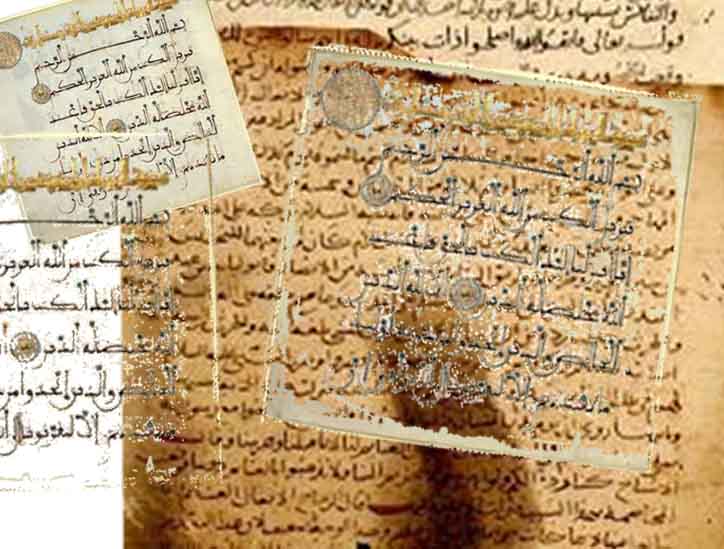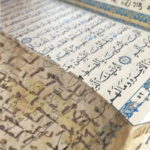
The widespread belief that the Qur’ān has a single, unambiguous reading is partly due to the confidence of the translators, who rarely expressed any doubts about their selections. Even so, this is due above all to the resounding success of the standard Egyptian edition of the Qur’ān that was first published on 10 July 1924 in Cairo.[1] This edition is now widely regarded as the official text of the Qur'an.
INITIALLY, THE PUBLICATION of this edition was a purely Egyptian affair. It was the work of a government-appointed committee led by Muḥammad ibn ‘Alī al-Ḥusaynī al-Ḥaddād[2], which aimed to develop a unified text for religious education in Egypt.
Some minor modifications were later made to this text in subsequent editions, one published in 1924 and another in 1936. The 1936 text became known as the Farouk edition after the Egyptian king Farouk (r. 1936–1952). But the influence of the Cairo text quickly spread far beyond Egypt. It was adopted almost universally by both Sunni and Shī‘a Muslims, as well as by critical scholars, who had long abandoned Gustav Flügel’s 1834 edition. In his 1938 writing, Otto Pretzel noted with surprise that in his day an actual canonical text had appeared for the first time.[3]
However, the Egyptian project was never intended to be a critical edition of the text, at least as far as the term is commonly understood. The scholars who worked on this project did not seek to reconstruct the ancient form of the Qur’ān, but rather tried to preserve one of the authorised ‘readings’ (in the specialized sense of the Islamic tradition) – the narration of Ḥafṣ (d. 180/796) from ‘Āṣim (d. 127/745). But these readings are actually part of the history of the text, not its starting point, and the idea that there was a separate number of different but equal legal readings did not develop until the fourth century AH/tenth century CE, when major divisions had occurred over the Qur’ān. Ibn Mujāhid (d. 324/936) and others promoted this organizational system.
Ibn Mujāhid argued that the seven readings were equally correct. Others argued for ten or fourteen. The gradual (but never completed) acceptance of the Seven Readings argument (often attributed to Ibn Mujāhid’s use of a hadith[4] that talked of the ‘seven letters’ of the Qur’ān) was generally accompanied by the caveat that each reading had two versions. Fourteen different versions of the text are therefore considered equally authentic, only one of which is Ḥafṣ from ‘Āṣim. Even in this scenario, there is no consensus on the precise form of the reading of Ḥafṣ from ‘Āṣim. It is claimed that they were transmitted in four different scripts (methods), and contradictions abound concerning the various scripts that are claimed for it.

Suggested Reading
In the early twentieth century, therefore, the form of the Qur’ān did not appear at all clear. In fact, the Egyptian government was eager to initiate a project that would lead to the issuing of the Cairo edition of the Qur’ān text precisely due to these differences (or ‘errors,’ as described in the Appendix of the Cairo edition) that were found in Qur’ānic texts being imported for public schools. In response, the government destroyed a large number of these texts by throwing them into the Nile and issued its own text. The Cairo project thus followed the spirit of Caliph ‘Uthmān and the wālī al-Ḥajjāj ibn Yuūuf (ob. 95 AH/714 CE), who reportedly ordered the destruction of rival copies and distributed their own text in the first Islamic century.
When scholars in Cairo decided to install a unified text according to Ḥafṣ from ‘Āṣim, they still had to decide which accounts to trust. Their project, then, included a thorough research of the works of classical readings. In fact, they conducted this research with great precision and attention to detail, according to the observations of many Western scholars.[5] Gotthelf Bergsträsser, for example, pointed out that in only a few cases did their readings contradict Ḥafṣ from ‘Āṣim.[6]
[1] This was not the first printed version of the Qur’ān; the first was that ordered by Muḥammad ‘Alī in Egypt in 1833, in the face of considerable opposition from religious scholars who argued that mechanical printing processes were not suitable for reproducing the Word of God. On this see M. Albin, ‘The printing of the Qur’ān’ Encyclopaedia of the Qur’ān, 4, 269–70. During Napoleon’s campaign Al-Azhar strongly opposed a printing press brought from France and organised a demonstration to be held at the port and for the device to be smashed, out of fear of copies of this Qur’ān spreading among the people. (Editor’s note: for the complete set of volumes of the Encyclopaedia of the Qur’ān see the Almuslih Library under: ‘Introduction, Collected Overviews’. Volume IV of Encyclopaedia of the Qur’ān may be viewed here ).
[2] Muḥammad ibn ‘Alī al-Ḥusaynī al-Ḥaddād (1865 – 1939) was an Egyptian Mālikī jurist and reciter, and one of the most prominent Qur’ān reciters of his time in Egypt, occupying the office of the shaykhdom of the Mālikī masters at Al-Azhar Mosque. In 1906, he became the Shaykh of reciters in Egypt. He wrote a Qur’ān by hand in the manner corresponding to the Ottoman calligraphy, for which reason the Egyptian government approved it, took it as an official authority, and King Fu‘ād I ordered it to be printed. Al-Ḥaddād was known for his response to Taha Hussein’s book on pre-Islamic poetry, (Editor’s note, see the Almuslih article Taha Hussein – On science and dogma ) and argued that the contemporary reading of the Qur’ān is precisely that of the Prophet Muḥammad, and was not to be attributed to various Arab tribes. See Al-Ḥaddād’s Al-Suyūf al-Sāṭi‘a, Cairo, 1344, and his biographical tribute by Bergstrasser: The Qur’ān in Cairo, 13-23.
[3] “It is strange that in this unique book the freedom the remains is even further restricted, so that today only the reading of Ḥafṣ from ‘Āṣim is recognised and adopted.” (O. Pretzel, “Tasks and Objectives of Qur’ānic Research’, Proceedings of the Twentieth Conference of International Orientalists, Brussels, 5-10 September 1938, Louvain: Music Offices, 1940, 328-9. Reprinted in R. Barrett (ed.), The Qur’an, Research Methods 326, Darmstadt: Scientific Book Society, 1975, 411-12.
[4] There is more than one version of this hadith, including Ṣaḥīḥ al-Bukhārī 2419: ‘The Qur’an has been revealed in seven different ways, so recite it in the way that is easier for you’ and, according to Ṣaḥīḥ Muslim 820a: ‘He (the Holy Prophet) said to me: Ubayy. a message was sent to me to recite the Qur’an in one dialect, and I replied: Make (things) easy for my people. It was conveyed to me for the second time that it should be recited in two dialects. I again replied to him: Make affairs easy for my people. It was again conveyed to me for the third time to recite in seven dialects.’
[5] Bergsträsser was deeply impressed by the Cairo edition, commenting: “There is an ancient Islamic science that is re-appearing these days with vitality and efficiency; it is a document that demonstrates the current surprisingly high level of the profession of Qur’ān recitation in Egypt ( قراءة القرآن الكريم في القاهرة ) p.10.
[6] Bergstrasser points out that his colleague (and successor) Otto Pretzel had provided him with a list of differences between the orthographic rules followed in the Cairo text and those recommended by Abū ‘Amr al-Dānī (d. 444/1053) in his book قراءة القرآن الكريم في القاهرة , XI, no.1.
